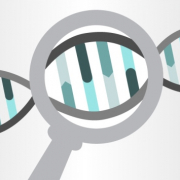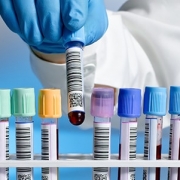Prenatal genomics – an overview
What role can genomics play before a baby is born? We break down the screening and testing options available now – from traditional methods to new technologies
There are many options available to help learn more about a fetus’s genetic health. A pregnant woman will commonly be offered screening to establish the chance of certain conditions, and may go on to have testing to get a conclusive diagnosis. But what options are available at each stage, and where can genomics make a difference?
What is the difference between screening and diagnostic testing?
Antenatal screening and diagnostic testing are both important stages in determining whether a fetus may have a genetic condition, but they each play a different role. Screening is used to identify the potential chance of a condition and is non-invasive, whereas diagnostic testing is used to confirm the presence of a condition, and usually presents a risk of miscarriage to the pregnancy.
Methods of antenatal screening
Antenatal screening is offered to everyone who is pregnant, although it is not compulsory. It is delivered as part of routine standard care during pregnancy – primarily by midwives and sometimes the GP.
Common methods include non-genomic technologies such as the ‘combined’ screening test and pregnancy ultrasound, the latter of which provides images in the first and second trimesters of pregnancy. Ultrasound scans are important as they can confirm or exclude congenital or structural fetal anomalies, which may be idiopathic or multifactorial in nature.
Genomic technologies used include non-invasive prenatal testing (NIPT), which uses fragments of cell-free fetal DNA circulating within maternal blood plasma to exclude conditions caused by an atypical number of chromosomes. NIPT can more accurately detect trisomy (a type of condition caused by an additional chromosome) and so it is offered after a higher-chance antenatal screening test result to allow people to make a more informed choice about whether to have invasive diagnostic testing.
Reasons for invasive diagnostic testing
Invasive diagnostic testing, such as chorionic villus sampling (CVS) or amniocentesis, is carried out when there is a specific reason to look for a particular chromosomal or genomic variant. The procedure is guided by an ultrasound scan, and is usually undertaken by an obstetrician with a special interest in fetal medicine, or a specialist in fetal medicine based in a tertiary-level fetal medicine unit.
Screening methods, such as the combined test that may return a higher chance of a trisomy, or an ultrasound scan that reveals other unusual findings, can be followed up by an invasive diagnostic test (if the woman chooses) to obtain a small sample of fetal cells for genomic analysis. These procedures can also be offered if there is a family history of one or more genetic conditions.
In some cases, tests can be done prior to conception. These include testing prospective parents, for example, to see if they are carriers for a specific condition. If confirmed, then pre-implantation genomic diagnosis (PIGD) can test early embryos in vitro and healthy embryos can be returned in utero. These tests would usually take place following a full discussion with the PIGD staff about the benefits, limitations and implications of the procedure and with parental consent.
Not all diagnostic tests are invasive, however. Non-invasive prenatal diagnosis (NIPD) is typically offered by the clinical genetics service and applied in situations where there is a higher chance of a genetic condition in the baby, usually because the parents already have a child affected by the condition.
Rapid fetal whole exome sequencing
Rapid prenatal whole exome sequencing (RP-WES) is a relatively new development within the NHS that looks for a limited number of specific fetal anomalies. The technology reads all the DNA letters in the fetal exome – the part of the genome where most changes that cause genetic conditions are found. RP-WES looks for DNA differences between fetal and parental blood samples to find changes that may be causing a genetic condition. Clinical scientists examine the genes that they believe may affect how the fetus develops in the womb. Sometimes, information gained after delivery may prompt further tests that may enable a more refined diagnosis.
After interpretation, the results from RP-WES can provide real clinical benefits that would not otherwise be possible. For example, research has shown that, with expert multidisciplinary review for case selection and data interpretation, RP-WES yields timely, high diagnostic rates of around 80% in fetuses presenting with unexpected skeletal anomalies. Overall, it improves parental counselling and pregnancy management.
–









